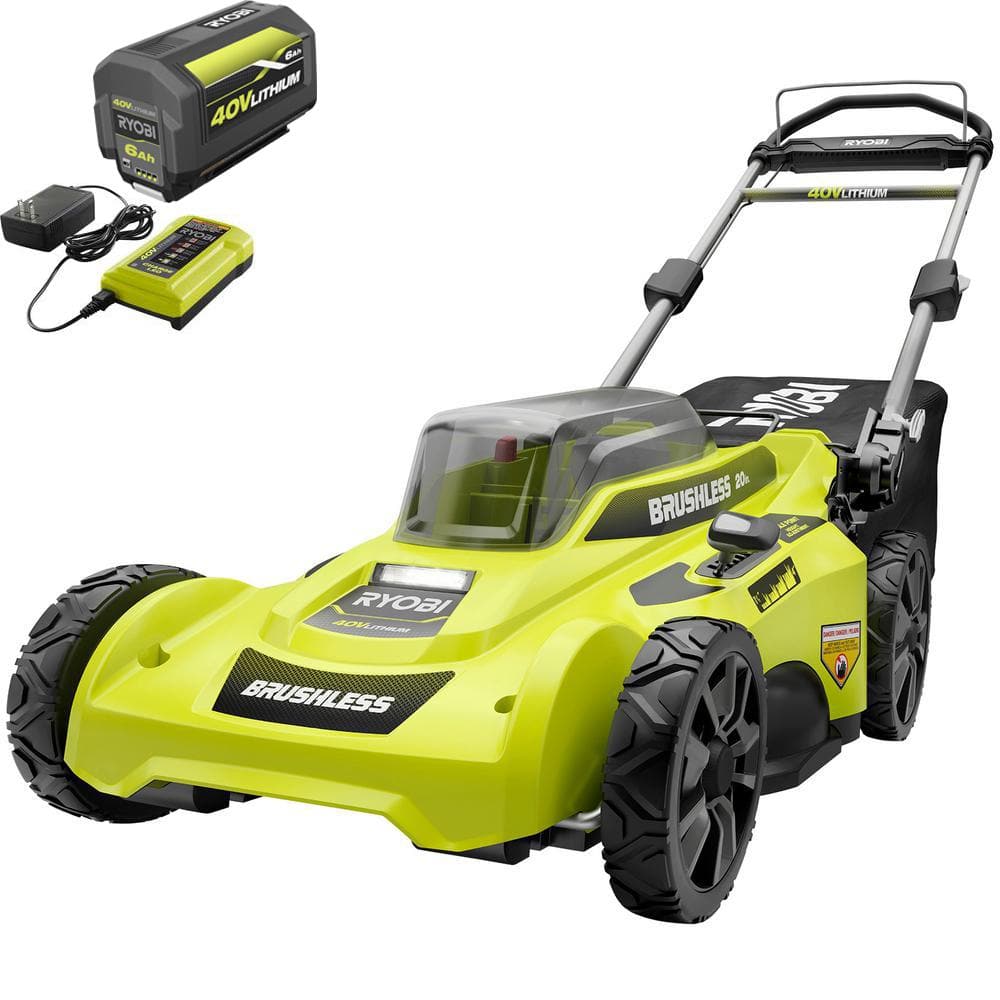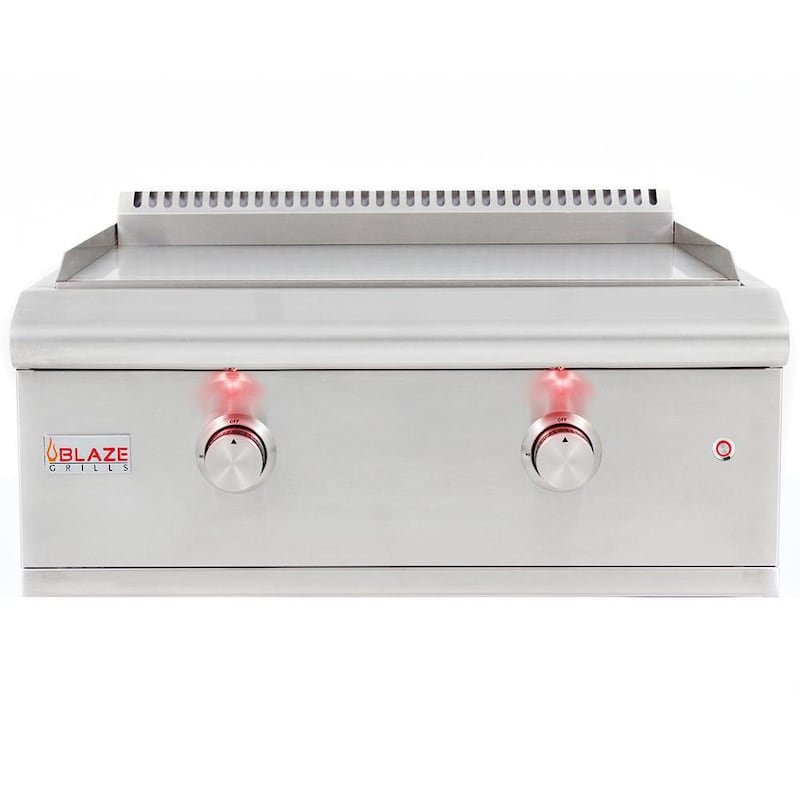RYOBI 40V Brushless 20 in. Cordless Walk Behind Self-Propelled Lawn Mower with 6.0 Ah Battery & Charger
Self-Propelled Rear Wheel Drive for Maximum Convenience. 3-in-1 Mulching, Bagging, and Side Discharge Capability. Works with All RYOBI 40V Batteries.
RYOBI continues to lead the industry in cordless mower innovation with their second generation 40-Volt 20 in. Brushless Self-Propelled Mower. Combining 40-Volt Lithium-Ion Battery power with Brushless Technology this mower delivers gas-like power, without the hassle of gas, oil or maintenance. The high capacity 6 Ah battery provides extended run-time and instant power at the push of a button. Choose between bagging or mulching your grass, to get your desired results or purchase the side discharge accessory online (model, AC040VSD01) for 3-in-1 mulching, bagging and side discharge capability. Select your ideal grass height with the 7-position single point height adjustment. If you prefer mowing in the cooler evening hours, high-intensity LED headlights provide the perfect solution. When the job is done simply remove the Easy-Lift single motion lock and release bagger to empty your grass and lock it back in place. With collapsible telescoping handles, this mower easily folds down when the job is done and can be stored vertically making it ideal for compact spaces.
- Self-Propelled technology for user convenience
- Rear wheel drive for increased traction
- Powerful brushless motor delivers gas-like power
- Load sensing technology maximizes power and efficiency
- 6.0 Ah high-capacity battery for extended run time
- Push button for hassle free starting
- Easy-lift lock-and-release bagger for single motion bag removal
- Collapsible telescoping handles for compact storage
- 7-position, single-point height adjustment from 1.5 in. to 4 in.
- 3-in-1 mulching, bagging and side discharge capability (side discharge accessory sold separately model, AC040VSD01)
- High-intensity LED headlights
- On-board battery storage compartment for easy battery exchange
- 5-year limited warranty, 90-day no risk satisfaction guarantee
- Up to half an acre per charge
Additional information
| Assembled Depth x Height x Width (in.) | 62.5 x 39 x 21.5 |
|---|---|
| Blade Length (in.) | 19.75 |
| Cutting Width (in.) | 20 |
| Front Wheel Size (in.) | 8 |
| Mower Deck Width (in.) | 20 |
| Rear Wheel Height (in.) | High Wheel |
| Rear Wheel Size (in.) | 10 |
| Certifications and Listings | cTUVus |
| Manufacturer Warranty | 5-Year Limited Tool Warranty, 3-Year Limited Battery Warranty |








by Ellie
Love ❤️. Push a button to start. Great for me.. super light.. also very quiet, don’t have to worry about it being too early or too late
by Ferny
i have an issue with the engine start button, i really needs to be pressed for it to start, another issue is that i fell in love with the machine so much that i bought another battery for it, in order to finish a job and i dont have a big lawn but the battery can be used for other tools so.
by Ottis
The rear wheel drive has its problems. If you want to stop and pivot the mower the weight goes on the rear wheels and the mower keeps running away Front wheel drive is more comfortable for the person who mows Or else one has to raise the mower to disengage for a moment the self drive Or let the handles go (which are their own problem, because you have to let go both of them, if you want to turn); but then you have to move the mower with your own strength around the turn; hope you understand what I mean.
by Marc
Now that I got everything working, I do like it very much. Even the technician had forgotten that the safety feature that the handle had to be fully extended in order for the starter to engage.
by Chu
So glad we got this mower. No more relying on gas and much more quiet.
by Lander
This mower far exceeded my expectations and so glad I opted for the self propelled model for more ease and comfort.